TMEM120B strengthens breast cancer cell stemness and accelerates chemotherapy resistance via β1-integrin/FAK-TAZ-mTOR signaling axis by binding to MYH9
- PMID: 38504374
- PMCID: PMC10949598
- DOI: 10.1186/s13058-024-01802-z
TMEM120B strengthens breast cancer cell stemness and accelerates chemotherapy resistance via β1-integrin/FAK-TAZ-mTOR signaling axis by binding to MYH9
Abstract
Background: Breast cancer stem cell (CSC) expansion results in tumor progression and chemoresistance; however, the modulation of CSC pluripotency remains unexplored. Transmembrane protein 120B (TMEM120B) is a newly discovered protein expressed in human tissues, especially in malignant tissues; however, its role in CSC expansion has not been studied. This study aimed to determine the role of TMEM120B in transcriptional coactivator with PDZ-binding motif (TAZ)-mediated CSC expansion and chemotherapy resistance.
Methods: Both bioinformatics analysis and immunohistochemistry assays were performed to examine expression patterns of TMEM120B in lung, breast, gastric, colon, and ovarian cancers. Clinicopathological factors and overall survival were also evaluated. Next, colony formation assay, MTT assay, EdU assay, transwell assay, wound healing assay, flow cytometric analysis, sphere formation assay, western blotting analysis, mouse xenograft model analysis, RNA-sequencing assay, immunofluorescence assay, and reverse transcriptase-polymerase chain reaction were performed to investigate the effect of TMEM120B interaction on proliferation, invasion, stemness, chemotherapy sensitivity, and integrin/FAK/TAZ/mTOR activation. Further, liquid chromatography-tandem mass spectrometry analysis, GST pull-down assay, and immunoprecipitation assays were performed to evaluate the interactions between TMEM120B, myosin heavy chain 9 (MYH9), and CUL9.
Results: TMEM120B expression was elevated in lung, breast, gastric, colon, and ovarian cancers. TMEM120B expression positively correlated with advanced TNM stage, lymph node metastasis, and poor prognosis. Overexpression of TMEM120B promoted breast cancer cell proliferation, invasion, and stemness by activating TAZ-mTOR signaling. TMEM120B directly bound to the coil-coil domain of MYH9, which accelerated the assembly of focal adhesions (FAs) and facilitated the translocation of TAZ. Furthermore, TMEM120B stabilized MYH9 by preventing its degradation by CUL9 in a ubiquitin-dependent manner. Overexpression of TMEM120B enhanced resistance to docetaxel and doxorubicin. Conversely, overexpression of TMEM120B-∆CCD delayed the formation of FAs, suppressed TAZ-mTOR signaling, and abrogated chemotherapy resistance. TMEM120B expression was elevated in breast cancer patients with poor treatment outcomes (Miller/Payne grades 1-2) than in those with better outcomes (Miller/Payne grades 3-5).
Conclusions: Our study reveals that TMEM120B bound to and stabilized MYH9 by preventing its degradation. This interaction activated the β1-integrin/FAK-TAZ-mTOR signaling axis, maintaining stemness and accelerating chemotherapy resistance.
Keywords: Breast cancer; Focal adhension kinase; MYH9; Stemness; TMEM120B.
© 2024. The Author(s).
Conflict of interest statement
The authors declare no competing interests.
Figures

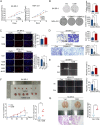


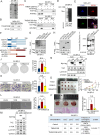
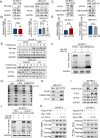
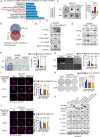
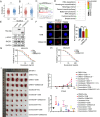

References
Publication types
MeSH terms
Substances
Grants and funding
LinkOut - more resources
Full Text Sources
Medical
Molecular Biology Databases
Research Materials
Miscellaneous

